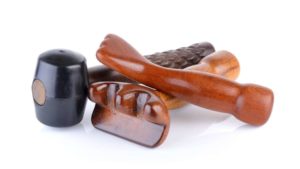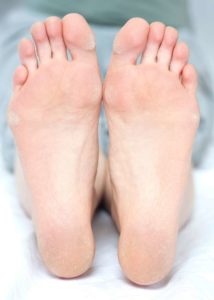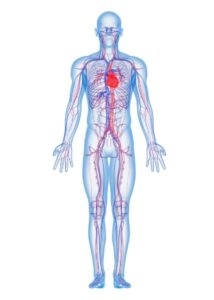What is Reflexology?
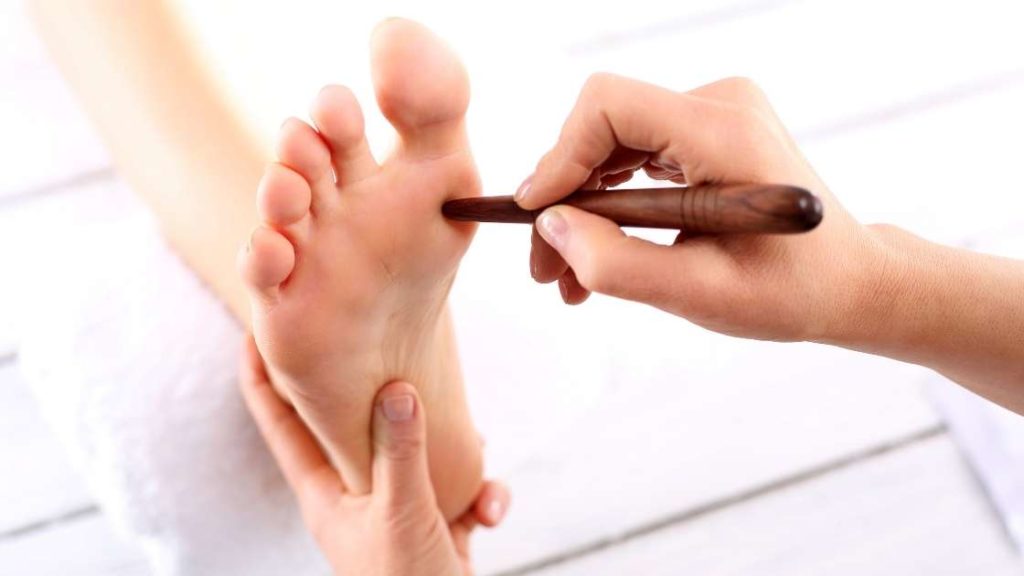
Sometimes called reflexotherapy, reflexology is a traditional Chinese healing method that dates back 5,000 years. It involves applying pressure to specific points on the feet and hands. And sometimes on the ears, too! The idea is that each pressure point correlates to a specific body part, organ, or bodily system. Depending on your treatment goals, a therapist will press on points that respond to affected areas of your body.
Practitioners who use reflexology are called reflexologists. But some people like to perform it on themselves, too! They just follow a chart like this one: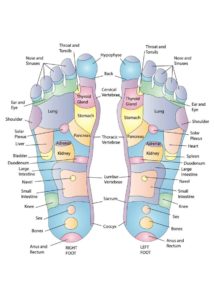 Let me just explain to you how it all works
Let me just explain to you how it all works
How Does Reflexology Work?
A few paragraphs ago, I gave a very basic explanation. There are points on your body that correlate with other parts of your body, and reflexology applies pressure to the points that you need treated. Your reflexologist may push the point with a thumb, finger, knuckle, base of the hand, or specialized massage tool.
Pressing on pressure points can help stabilize qi, which is known as the vital life force in traditional Chinese medicine. Are you stressed out? Do you have a headache? Are you just not feeling that great? Maybe your qi is off, and some reflexology can balance out your nervous system. The theory is that applying pressure to the points will send energy flowing to an area with blocked qi, which could be the cause of your discomfort. Free the qi, and your body should relax.
For example, your toes are correlated with organs and body parts on or near your head. If you’re having a headache, your reflexologist will likely treat your toes first. When your big toe is pinched, your pituitary gland (a small gland located at the base of your brain) is being stimulated. If your smaller toes are being pressed, your nose and sinuses are getting the treatment.
Look at a picture of the sole of a foot, with the toes at the top and the heel at the bottom. If you place a picture of an anatomically positioned human besides that foot, you’ll find that pressure points fall in line with the layout of the human body. The tips of the toes are connected to the head. The heart and lungs correlate near the ball of the foot. The kidneys and intestines are reflected in the arch of the foot. And the heel is associated with your coccyx and rectum. Reflexology points on the hands are pretty much identical. Fingertips correlate with the head, etc.
Is Reflexology a Type of Massage?
That’s kind of up for debate. Yes, they’re both relaxing and involve the healing power of touch. But I personally wouldn’t call reflexology by itself a massage. That being said, I always combine foot/hand massage into the treatment when I perform reflexology.
The main differences between reflexology and massage are the techniques used. Reflexology can be pokey and proddy, kind of like trigger point therapy but far gentler. Massage, though there are many different modalities, generally involves gliding and manipulation.
Another difference is the rigidness of reflexology. Whenever you get reflexology, you have a general idea of what to expect. The reflexologist will dig into your hands, feet, or ears; one point at a time, maybe slipping a foot rub in here and there. With massage, there’s more freedom. Your therapist may have used more kneading techniques at your last session, but next time you want elbow glides. Or, let’s say that you like to get massage and reflexology at the same time, but you also like to see different therapists. The reflexology portion probably won’t differ much from therapist to therapist, but the massage more than likely will.
Common Uses for Reflexology
- Anxiety relief
- Pain relief – sore muscles, headaches, arthritis pain, etc.
- Sinus problems – colds or bacterial infections
- Digestive issues
- Immunity boost
- Hormonal imbalances – PCOS, menstrual discomfort, etc.
Things to Consider
- Remember when I said the technique is more similar to trigger point therapy than it is to massage? You may encounter some discomfort, as you’ll likely have some tender spots on your feet. Especially near your solar plexus, that one’s the worst. But the majority of the session shouldn’t be painful. The goal is to relax. Should you experience pain, voice it to your reflexologist.
- Avoid reflexology if you have fractures, unhealed wounds, or gout in your hands or feet.
- Even though reflexology is often used to treat arthritic pain, still consult your physician first if you have arthritis in your hands or feet. Also consult your physician if you have vascular disease in your limbs.
- As a massage therapist, I’ve been instructed to never perform reflexology on pregnant women. Because of this, I’m not sure just how effective the labor-inducing reflexology point actually is. Regardless, let your reflexologist know if you’re pregnant. It’s best to stay on the safe side and not have that point pressed while you’re in a massage room.
- It’s ok to not like reflexology. If you just wanted to try it out and find mid-session that you don’t like it, let your therapist know. You two can resume a normal massage after that, and you can say you tried!
So, is Reflexology for You?
You won’t know unless you try it out! Ask about our therapists who perform reflexology when you schedule your next massage!

Katrina Jenkins
Author, Licensed Massage Therapist
Katrina Jenkins graduated from Towson University in 2013 with a Bachelor’s Degree in Health Science and worked as a nurse’s aide briefly before pursuing her true passion. She graduated from the Massage Therapy Institute of Colorado in April 2016 with honors and completed the Touch of Healers Scholarship Program the following summer. She has been a part of the Moyer Total Wellness Team since the summer of 2017.
Resources
Bauer, Brent A. “Reflexology for Stress Relief.” Mayo Clinic, Mayo Foundation for Medical Education and Research, 1 Dec. 2018, www.mayoclinic.org/healthy-lifestyle/consumer-health/expert-answers/what-is-reflexology/faq-20058139.
Cirino, Erica. “What Is Reflexology and How Does It Work? Benefits, Research, Safety.” Healthline, Healthline Media, 4 Dec. 2018, www.healthline.com/health/what-is-reflexology.
Teagarden, Karen. “Are There Times When I Shouldn’t Have Reflexology?” Taking Charge of Your Health & Wellbeing, www.takingcharge.csh.umn.edu/explore-healing-practices/reflexology/are-there-times-when-i-shouldn-t-have-reflexology.
Wheeler, Tyler. “Reflexology Therapy for Stress, Anxiety, Pain, and Fatigue.” WebMD, WebMD, 14 Aug. 2019, www.webmd.com/balance/what-is-reflexology.
Photo Credit
Canva by robertprzybysz from Getty Images
Nicole Morrison
Canva by sommail
Canva by wakila
Canva by Image Team

